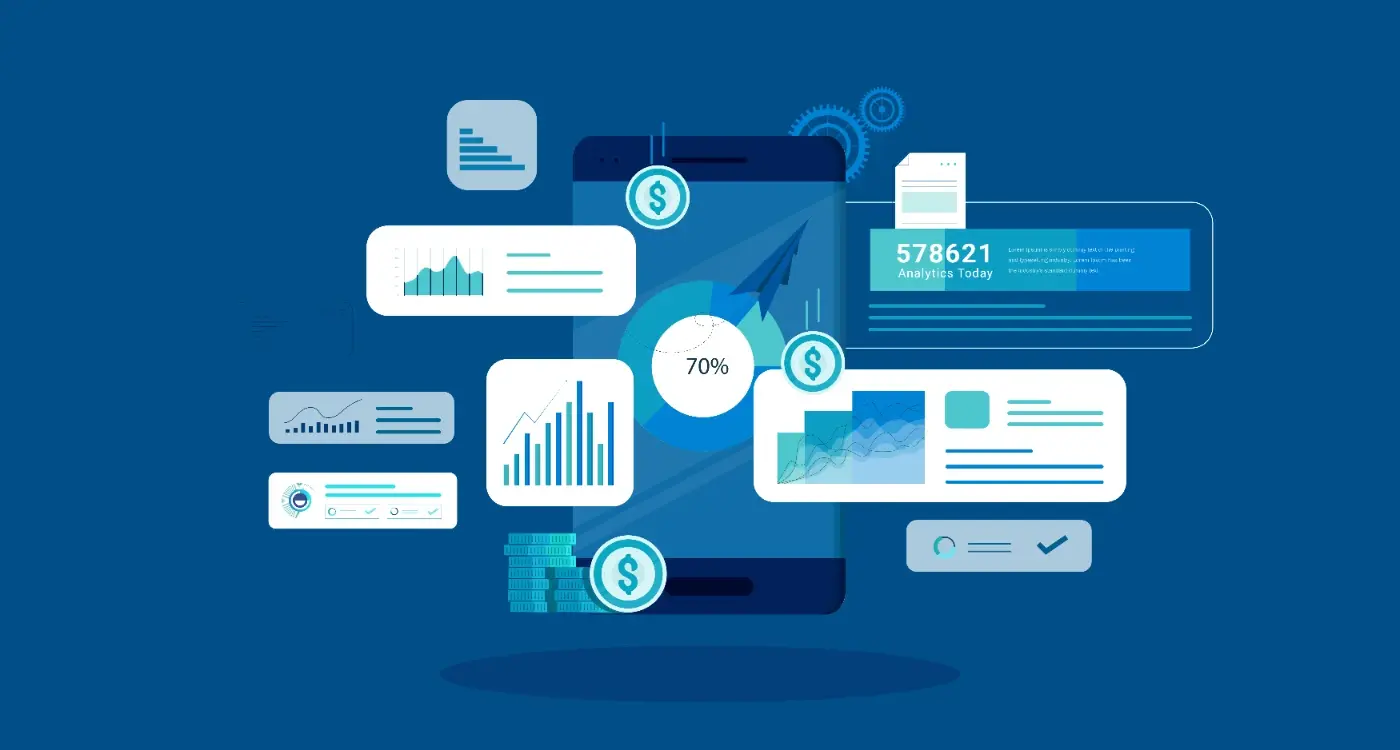How Should B2B Apps Position Differently Than Consumer Apps?
Building B2B apps is a completely different beast than creating consumer apps—and I mean that in the best possible way. After developing apps for both markets over the years, I can tell you that the strategies that work brilliantly for consumer apps often fall flat on their face when applied to business contexts. It's not just about changing your colour scheme from bright orange to corporate blue; we're talking about fundamentally different approaches to everything from user experience to pricing.
Consumer apps live and die by downloads, user ratings, and viral growth. B2B apps? They succeed through trust, compliance, and solving real business problems that justify their price tag. When someone downloads your consumer app, they might give you thirty seconds to impress them before they delete it. But when a business evaluates your B2B app, they'll spend weeks—sometimes months—analysing how it fits into their existing workflows, security requirements, and budget constraints.
The biggest mistake I see developers make is treating B2B apps like consumer apps with a coat of enterprise paint
The stakes are higher too. If your consumer app crashes, one person gets annoyed. If your B2B app goes down, it might affect an entire company's productivity for hours or days. That's why enterprise positioning requires a completely different mindset—one focused on reliability, integration capabilities, and measurable business outcomes rather than engagement metrics and user delight. Sure, user experience still matters, but it needs to serve multiple stakeholders with different priorities and technical skill levels.
Right, let's talk about understanding your B2B audience—because honestly, this is where most people get it completely wrong. They think business users are just consumers in suits, but that's not how it works at all.
When someone downloads your consumer app, they're making a personal choice with their own money and time. But in the business world? That person using your app probably didn't choose it, didn't pay for it, and might not even want to use it. That changes everything about how you need to position your product.
The Real Decision Makers
Here's the thing that trips up loads of app developers—the person who signs the cheque isn't usually the person who uses your app daily. You've got procurement teams, IT departments, compliance officers, and budget holders all weighing in on the decision. Each one has completely different concerns and priorities.
The actual users? They want something that makes their job easier and doesn't require three training sessions to figure out. The IT team wants to know it won't break their security protocols or require constant support tickets. The finance director wants to see clear ROI and cost justification. And the CEO? They want to know how this helps the bottom line.
Multiple Users, Multiple Needs
Unlike consumer apps where you design for one person's journey, B2B apps need to serve different user types within the same organisation. The manager needs reporting dashboards, the team members need task management, and the admin needs user controls. You can't just focus on one user persona—you need to think about the entire ecosystem of people who'll interact with your app, even if they use it completely differently.
This is why B2B positioning is so much more complex than consumer apps. You're not selling to one person; you're selling to an entire organisation with competing interests and requirements.
The Enterprise Sales Cycle Challenge
Here's the thing about B2B apps—your sales cycle isn't measured in days or weeks like consumer apps. We're talking months, sometimes even years before someone actually commits to your enterprise app. I've worked on business apps where the decision-making process involved seven different stakeholders across three departments. It's mental, but that's the reality of enterprise sales.
Consumer apps benefit from impulse downloads. Someone sees your app, thinks "that looks useful," and downloads it within minutes. But with B2B apps? That same person needs to convince their boss, get budget approval, check it meets compliance requirements, and probably sit through several demos first. Your app positioning needs to account for this extended journey.
Create different messaging for each stage of the enterprise sales cycle. Your initial awareness content should focus on high-level business problems, whilst your decision-stage materials need detailed ROI calculations and security documentation.
The Multiple Touchpoint Reality
Most B2B purchases involve 6-10 decision makers, and each one cares about different things. The IT director wants to know about security and integration capabilities; the finance director wants clear ROI projections; the end users want something that actually makes their job easier. Your app positioning must speak to all these concerns simultaneously.
I've seen brilliant B2B apps fail because they only addressed one stakeholder's needs. You might have the CFO convinced with your cost-saving metrics, but if the IT team thinks your security is rubbish, the deal dies. This is where working with experienced mobile app developers who understand enterprise requirements becomes crucial.
- Map out every potential decision maker in your target organisations
- Create specific value propositions for each stakeholder group
- Develop proof points that address each person's primary concerns
- Build nurture sequences that gradually address all stakeholder needs
- Prepare for lengthy evaluation periods with consistent touchpoints
Features vs Benefits in Business Context
Here's where most B2B apps get it completely wrong—they lead with a laundry list of features instead of talking about what those features actually do for the business. I mean, nobody cares that your app has "advanced analytics dashboards with 47 different chart types." What they care about is whether it'll help them make better decisions faster.
The difference between features and benefits becomes massive when you're selling to businesses. Features are what your app does; benefits are what your app achieves for the company. A feature might be "real-time inventory tracking across multiple locations." The benefit? "Never lose another sale because you thought you were out of stock when you weren't."
Common Feature-to-Benefit Translations
- Two-factor authentication → Protect your company data from costly security breaches
- Automated reporting → Save 10 hours per week on manual report generation
- API integrations → Connect with tools your team already uses daily
- Role-based permissions → Control exactly who sees what sensitive information
- Mobile offline mode → Keep working even when the office WiFi goes down
The thing is, business buyers are thinking about ROI, productivity gains, risk reduction, and competitive advantage. They're not impressed by your fancy machine learning algorithms—they want to know if those algorithms will help them retain more customers or reduce operational costs.
Consumer apps can get away with being cool or fun. B2B apps need to solve real business problems and prove their worth in pounds and pence. When I'm positioning a B2B app, I always ask: "If this feature disappeared tomorrow, what would actually go wrong for the business?" That's your benefit right there.
Lead with the business outcome, then explain how the feature delivers it. Not the other way around.
Compliance and Security Requirements
Right, let's talk about something that'll make or break your B2B app before it even gets through the door—compliance and security. I mean, consumer apps can get away with basic security measures, but business apps? They need to be locked down tighter than Fort Knox. And honestly, this is where I see so many developers stumble because they underestimate just how seriously enterprises take their data protection.
When you're building for businesses, you're not just dealing with personal photos or shopping preferences; you're handling sensitive financial data, employee records, trade secrets, intellectual property—the stuff that companies would literally go out of business if it got leaked. That means your B2B app strategy needs to account for regulations like GDPR, HIPAA (if you're touching healthcare), SOX compliance for financial services, and whatever industry-specific requirements your target audience faces.
The Security Checklist That Actually Matters
Enterprise positioning isn't just about fancy features—it's about proving you understand the regulatory landscape your clients operate in. End-to-end encryption isn't optional, its table stakes. Multi-factor authentication, role-based access controls, audit trails that track every single user action... these aren't nice-to-haves, they're deal-breakers if they're missing.
The moment a potential client asks about your SOC 2 certification and you don't have one, that conversation is basically over
But here's what really gets me—security certifications like SOC 2 Type II, ISO 27001, or PCI DSS compliance aren't just technical requirements; they're marketing tools. Business app development teams that get this right can charge premium prices because they're selling peace of mind, not just functionality. Consider exploring database-as-a-service solutions to enhance your app's security credentials whilst maintaining performance.
User Experience for Multiple Stakeholders
Here's where B2B app development gets properly tricky—you're not designing for one person, you're designing for an entire ecosystem of users. I mean, think about it; in a consumer app, you've got Sarah who wants to order pizza. Simple. In B2B? You've got the manager who needs reports, the accountant who processes invoices, the IT person who worries about security, and the CEO who cares about ROI.
Each stakeholder has completely different priorities and pain points. The daily user wants speed and simplicity—they don't want to click through five screens to do something basic. But the administrator needs detailed controls and permissions settings. The compliance officer? They want audit trails and data governance features that most users will never see.
Balancing Competing Needs
What I've learned over the years is that you can't just slap on different user interfaces and call it a day. You need to understand the relationships between these stakeholders. The person using your app daily isn't necessarily the person who signed the contract or manages the budget.
One approach that works well is creating role-based experiences within the same app. Here's how different stakeholders typically prioritise features:
- End users: Speed, simplicity, mobile-first design
- Administrators: Control panels, user management, customisation options
- Decision makers: Dashboards, analytics, ROI tracking
- IT teams: Security settings, integration capabilities, system monitoring
- Compliance: Audit logs, data protection controls, reporting tools
The key is making sure each group can find what they need without getting overwhelmed by features meant for others. Progressive disclosure works brilliantly here—show people what they need when they need it, but keep the advanced stuff accessible for those who want it.
Remember, if any one stakeholder becomes frustrated with your app, they can influence the entire organisation's decision to renew or recommend your solution. It's like keeping multiple bosses happy at once, honestly! Following proven app development best practices can help ensure you don't miss critical UX considerations.
Pricing and Value Proposition Strategies
Right, let's talk money—because this is where B2B apps need to think completely differently from consumer apps. I mean, you're not dealing with someone spending £2.99 on a coffee-ordering app; you're talking to businesses that might spend thousands or even hundreds of thousands on software that'll transform their operations.
The biggest mistake I see in B2B app strategy is trying to use consumer pricing models. You know those freemium apps with in-app purchases? Forget about it. Enterprise positioning requires a completely different approach because your target audience isn't buying with their own pocket money—they're making decisions that affect entire organisations.
Business app development pricing typically revolves around three models: per-seat licensing (charging for each user), usage-based pricing (pay for what you consume), or value-based pricing (charging based on the business value delivered). I've found that value-based pricing works best when you can clearly demonstrate ROI, but it requires serious confidence in your app's ability to deliver measurable results.
Here's the thing about B2B pricing—businesses don't just buy features, they buy outcomes. When I'm working on enterprise positioning, I always focus the value proposition on what the app will do for the business: reduce costs, increase efficiency, improve compliance, generate revenue. Numbers matter here; vague promises don't cut it.
Your pricing strategy also needs to account for procurement processes. Many enterprises have budget cycles, approval hierarchies, and specific purchasing requirements. This means your pricing structure should be flexible enough to accommodate different payment terms, volume discounts, and multi-year contracts.
Always price based on business value, not development costs. If your app saves a company £100K annually, don't be afraid to charge £30K—you're still delivering massive value.
Marketing Channels That Actually Work
Right, let's talk about something that keeps most B2B app developers up at night—how do you actually get your app in front of the right people? After years of watching clients burn through marketing budgets on channels that just don't work for B2B, I've learned which ones actually move the needle.
LinkedIn is your best friend here, but not in the way most people think. Sure, you can run ads, but the real magic happens when you start building relationships. I've seen clients land six-figure deals just by sharing useful content and engaging genuinely with their target audience's posts. It's a bit mad really, but decision-makers actually pay attention on LinkedIn—unlike every other social platform where they're just scrolling past cat videos.
Industry Events and Trade Shows
Face-to-face meetings still matter more than we'd like to admit. Whether its virtual conferences or proper in-person events, being where your prospects are makes a massive difference. But here's the thing—don't just turn up with a booth and hope for the best. Run demos, speak at sessions, sponsor something meaningful. I've watched apps go from zero to hero just because they positioned themselves as thought leaders at the right event.
Content Marketing That Actually Helps
B2B buyers research everything before making decisions; they're reading whitepapers, case studies, and detailed technical documentation. Create content that genuinely helps them solve problems—not fluffy marketing nonsense. One client doubled their qualified leads by publishing detailed implementation guides that their competitors were too scared to share. Sometimes being transparent about how your app works is exactly what builds trust with enterprise buyers. Looking at successful mobile business apps can provide inspiration for your own content strategy.
Conclusion
Building B2B apps isn't just about making consumer apps in fancy suits—it's a completely different beast. After years of working with both startups trying to crack the enterprise market and established companies looking to modernise their mobile presence, I can tell you that the differences run much deeper than most people realise.
The biggest mistake I see is when teams apply consumer app thinking to business problems. You know, focusing on downloads instead of user adoption, or prioritising flashy features over rock-solid security. B2B apps need to solve real business problems, and they need to do it in a way that makes finance directors happy to write cheques.
Your target audience research needs to be spot on because you're not just convincing one person—you're often dealing with entire committees of stakeholders. The person using your app daily might love it, but if it doesn't tick the compliance boxes for the IT department or show clear ROI for the decision makers, you're stuffed. Understanding whether low-code platforms might suit your business app requirements can also be worth exploring early in your planning process.
The enterprise sales cycle means your app needs to be built for evaluation, not impulse downloads. Demo accounts, detailed documentation, and the ability to integrate with existing systems aren't nice-to-haves—they're requirements. And honestly, if your app crashes during a presentation to potential clients, you might as well pack up and go home.
B2B app strategy comes down to understanding that businesses buy solutions, not products. They want to know how your app will save them money, make them more efficient, or help them serve their customers better. Everything else is just noise. Focus on the business value, build for the enterprise environment, and position accordingly. That's how you win in the B2B mobile space.
Share this
Subscribe To Our Learning Centre
You May Also Like
These Related Guides

What Features Should Your B2B Client Portal App Include?

Should We Build Multiple Apps Or One Super App?



